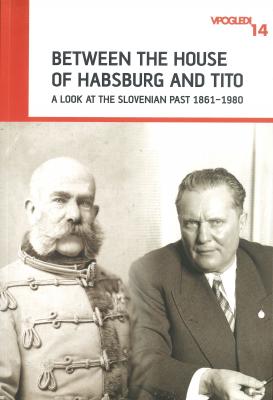Between the House of Habsburg and Tito: a look at the Slovenian past 1861–1980
Ključne besede:
Slovenija, zgodovina, 1861-1980Kratka vsebina
The Second half of the 19th and the entire 20th century was a momentous period of European history and an era which wrought fundamental changes to the social, political, economic and cultural life of what was ultimately to become the Republic of Slovenia, together with the adjacent territories inhabited by ethnic Slovenes. New borders also cut swathes through the lands these people populated. In the aftermath of its 1866 defeat in the War against Italy, Austria ceded Venetia to Italy, thus causing ethnic Slovenes in Slavia Veneta (Beneška Slovenija) to become Italian citizens. A year later, as a consequence of constitutional changes, the Habsburg Empire was transformed into Austria-Hungary Monarchy. In the new dualist state, Slovenes living in Prekmurje and the Porabje were now governed by Hungary, while the majority of the nation remained Austrian subjects. Austria, Hungary and Italy thus came to provide the historical framework for the disparate social, political, economic and cultural development of contemporary ethnic Slovenes living in Central Europe. This period was characterized by the instigation of parliamentary democracy, entrepreneurial incentive, cultural exchange and ethnic friction between Slovenes and the neighbouring nations.
Poglavja
-
Preface
-
Late Habsburg Monarchy as a Framework of Political Coexistence: the Slovenian Case
-
The Questions of the National Cohabitation (or Lack Thereof), Democratisation and Political Pluralisation in Slovenia in the Austrian Constitutional Period
-
Slovenians and Yugoslavia 1918–1941
-
The Parliament is Nothing but a Fairground.On the Characteristics of Parliamentary Debate in the Kingdom of Serbs, Croats and Slovenes/Yugoslavia (1919–1939)
-
Questions of OF Democracy and Coexistence in the Opinion of Slovenian Marxists 1918–1941
-
Slovenian Resistance Movement and Yugoslavia 1941–1945
-
Armed Resistance in Slovenia, Slovenian Partisan Army 1941-1945 in Relationshio to the Yugoslav Command
-
Ideological Basis of Collaboration in Europe During World War II and a Short Comparison with Slovenia
-
Life in Occupied Slovenia During World War II
-
History of the Holocaust in Slovenia
-
The Time of Tito's Yugoslavia, Key Issues Between 1945 and 1980
-
Yugoslav-Italian Border and the Issue of Slovenian Access to the Sea
-
Slovenian Language and the Yugoslav People's Army
-
The Civil Repressive Apparatus of the Second Yugoslavia and Its Perception Among the Slovenian Public

Izdano
Zbirka
Tiskane izdaje ISSN
Licenca

To delo je licencirano pod Creative Commons Priznanje avtorstva-Nekomercialno-Brez predelav 4.0 mednarodno licenco.

